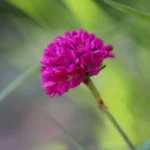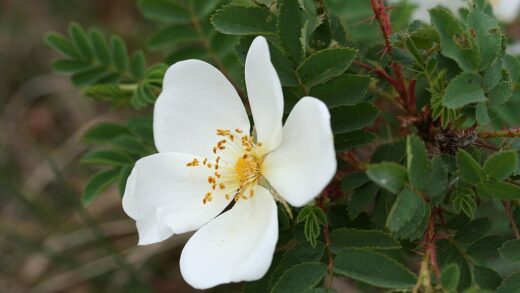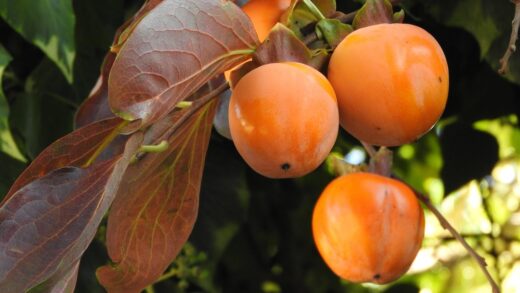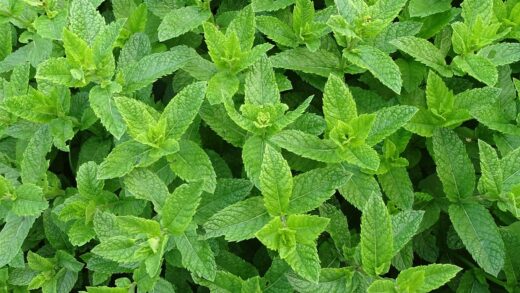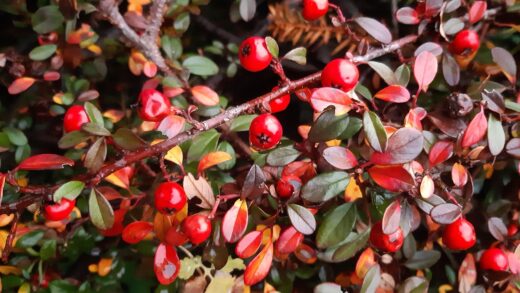Dusty miller, with its stunning silvery-white, felt-like foliage, is a truly remarkable addition to any garden landscape, offering a unique texture and color contrast that few other plants can match. Its versatility allows it to be used effectively in borders, containers, and as a striking backdrop for more colorful flowering plants, creating a sophisticated and visually appealing arrangement. Proper care is essential to maintain its vibrant appearance and ensure the plant remains healthy and vigorous throughout the growing season. Understanding its fundamental needs, from soil preferences to climatic tolerances, forms the very foundation of successful cultivation, enabling gardeners to unlock the full potential of this elegant plant and enjoy its beauty year after year.
Proper care begins with selecting an appropriate planting location, a decision that significantly influences the plant’s long-term health and development. Dusty miller thrives in a position that receives ample direct sunlight, as this is crucial for developing its characteristic silvery-white foliage. Insufficient light can lead to leggy growth and a less intense coloration, diminishing its ornamental value. The chosen site should also have excellent drainage to prevent water from accumulating around the root system. This Mediterranean native is particularly susceptible to root rot in waterlogged conditions, making well-draining soil an absolute necessity for its survival and prosperity.
Beyond sunlight and drainage, the soil’s composition plays a vital role in the overall well-being of the plant. Dusty miller is not particularly demanding when it comes to soil fertility and can perform admirably in average to poor soils where other plants might struggle. However, it prefers a slightly alkaline to neutral pH range, so amending overly acidic soils may be beneficial for optimal growth. Incorporating organic matter, such as compost or well-rotted manure, before planting can improve soil structure and drainage, creating a more hospitable environment for the roots to establish and expand. This initial soil preparation sets the stage for a robust and resilient plant.
Once established, dusty miller is remarkably low-maintenance, a quality that endears it to both novice and experienced gardeners. It exhibits excellent drought tolerance, requiring minimal supplemental watering after its root system has fully developed. Regular monitoring is still advisable, especially during prolonged periods of heat and drought, to ensure the plant does not become overly stressed. Consistent care practices, including occasional pruning and monitoring for pests, will help maintain its compact shape and prevent potential issues from escalating, ensuring the plant remains a stunning focal point in the garden.
Understanding the plant’s basic needs
To truly succeed in cultivating dusty miller, one must first develop a comprehensive understanding of its fundamental requirements. This plant is native to the Mediterranean region, a climate characterized by hot, dry summers and mild, wet winters. This origin story provides critical clues about its preferences, particularly its love for sunshine and its aversion to overly saturated soils. Replicating these conditions as closely as possible within the garden environment is the key to encouraging vigorous growth and maintaining the plant’s distinctive silvery hue. A deep appreciation for its natural habitat informs every aspect of its care.
More articles on this topic
The most critical factor in the plant’s care regimen is undoubtedly its need for sunlight. Dusty miller requires at least six to eight hours of direct, unfiltered sunlight each day to thrive and produce its most vibrant foliage. When planted in shady or partially shaded locations, the plant tends to stretch towards the light, resulting in elongated, weak stems and a sparse appearance. Furthermore, the lack of intense sunlight can cause the foliage to take on a greener, less desirable tone, losing the iconic silvery-sheen that makes it so popular. Therefore, selecting a planting site that is bathed in sun for the majority of the day is non-negotiable.
Soil drainage is another paramount concern that cannot be overstated. The plant’s root system is highly sensitive to excessive moisture and will quickly succumb to root rot if left in standing water. Ideal soil types are sandy or loamy, as these allow water to percolate through quickly, keeping the root zone sufficiently aerated. For gardens with heavy clay soil, significant amendments are necessary. Incorporating coarse sand, perlite, or fine gravel can dramatically improve drainage and create a much more favorable growing medium for this drought-tolerant species.
Finally, understanding its growth habit is essential for its long-term management. Dusty miller is typically grown as an annual in colder climates, but in milder regions, it can persist as a short-lived perennial. It has a naturally mounding or spreading habit, which can be controlled and shaped through judicious pruning. This not only maintains a desirable size and form but also encourages bushier growth, resulting in a fuller, more attractive plant. Recognizing its potential lifecycle and growth patterns allows the gardener to make informed decisions about its placement and maintenance throughout the seasons.
Soil and site selection
Choosing the perfect location is the first and most crucial step in ensuring the long-term health of your dusty miller. The ideal site is one that offers full, unimpeded sun exposure throughout the day. This is not merely a preference but a requirement for the plant to develop its signature silvery-white coloration. A south-facing or west-facing position is often perfect, as it guarantees the prolonged periods of direct sunlight the plant craves. Before planting, observe the proposed area at different times of the day to confirm it receives at least six hours of direct sun, which is the minimum for optimal performance.
More articles on this topic
The quality of the soil is equally as important as the quantity of sunlight. Dusty miller demands exceptionally well-draining soil to prevent the onset of fungal diseases and root rot, which are its primary adversaries. The plant is remarkably adaptable to various soil types, from sandy to loamy, as long as water does not linger around its roots. If you are working with heavy clay soil, which is notorious for poor drainage, you must take corrective measures. Amending the soil with generous amounts of organic matter like compost, along with inorganic materials such as coarse sand or perlite, will significantly improve its structure and porosity.
When preparing the planting bed, it is beneficial to work the soil to a depth of at least twelve inches. This process loosens compacted earth, allowing the plant’s roots to penetrate deeply and establish themselves more effectively. During this preparation, you can incorporate the necessary amendments to improve drainage and aeration. Creating a slightly raised bed can also be an excellent strategy, particularly in areas with high rainfall, as it physically elevates the root zone above the surrounding water table, further ensuring that the roots remain healthy and free from excess moisture.
Consider the plant’s mature size and its role within your overall garden design when selecting the final site. Dusty miller is often used as an edging plant or as a contrasting element in mixed containers and borders. Its silvery foliage provides a brilliant foil for brightly colored flowers, making them appear even more vibrant. Ensure you provide adequate spacing between plants to allow for good air circulation, which is another key factor in preventing fungal issues. Proper spacing also allows each plant to grow to its full potential without competing for resources like light and nutrients.
Watering and feeding practices
A common mistake in the care of dusty miller is overwatering, a testament to the plant’s impressive drought tolerance once it becomes established. For newly planted specimens, consistent moisture is necessary to help the root system develop and anchor itself in the new environment. During this initial phase, water the plants thoroughly whenever the top inch of soil feels dry to the touch. However, once the plant shows signs of new growth, indicating it has established, you can significantly reduce the frequency of watering. Mature plants often require supplemental irrigation only during extended periods of extreme heat and drought.
The key to successful watering is to provide deep, infrequent soakings rather than shallow, frequent sprinklings. Deep watering encourages the roots to grow further down into the soil, where moisture levels are more stable, making the plant even more resilient to dry conditions. Always allow the soil to dry out completely between waterings. This mimics the natural wet-dry cycles of its native Mediterranean climate and is crucial for preventing root rot. When you do water, apply it directly to the base of the plant to keep the foliage as dry as possible, which helps to minimize the risk of fungal diseases.
In terms of feeding, dusty miller has very modest nutritional requirements and generally performs best in soil that is not overly rich. Excessive fertilization, particularly with high-nitrogen formulas, can stimulate lush, green growth at the expense of the desirable silvery foliage. This can also lead to weak, leggy stems that are more susceptible to breaking and disease. For most garden soils, the nutrients present are sufficient to support healthy growth throughout the season, and no additional fertilizer is needed.
If your soil is exceptionally poor or if the plants are grown in containers where nutrients can leach out more quickly, a light application of a balanced, slow-release fertilizer at the beginning of the growing season is more than adequate. Alternatively, you can apply a diluted liquid fertilizer once or twice during the peak growing period. However, it is always better to err on the side of under-fertilizing rather than over-fertilizing this particular plant. Observe the plant’s performance; as long as it looks healthy and maintains its color, supplementary feeding is likely unnecessary.
Pruning and maintenance
Regular pruning is a vital aspect of dusty miller care, essential for maintaining the plant’s compact, bushy form and preventing it from becoming leggy and untidy. The primary goal of pruning is to encourage the development of new side shoots, which results in a denser, more attractive plant. Throughout the growing season, periodically pinch back the tips of the stems, especially on younger plants. This simple action removes the apical bud, redirecting the plant’s energy into producing lateral growth, leading to a much fuller appearance.
As the season progresses, dusty miller may produce small, yellow, daisy-like flowers. While some gardeners may find them appealing, these flowers are generally considered insignificant and can detract from the main attraction, which is the stunning foliage. Flowering also signals to the plant to slow down its vegetative growth. For this reason, it is highly recommended to remove the flower stalks as soon as they appear. This practice, known as deadheading, encourages the plant to continue investing its energy into producing more of its beautiful silvery leaves.
A more substantial trimming may be necessary in mid-summer if the plants begin to look sparse or elongated, a common occurrence during periods of rapid growth. At this time, you can cut the entire plant back by about one-third to one-half of its height. While this may seem drastic, dusty miller responds very well to this type of rejuvenation pruning, quickly pushing out a fresh flush of dense, new growth. This mid-season “haircut” is an excellent way to refresh the plants and ensure they look their best through the end of the season.
Beyond pruning, general maintenance involves keeping the area around the plants free of weeds, which can compete for water and nutrients. Applying a layer of mulch around the base of the plants can help suppress weeds and conserve soil moisture, but be careful to keep the mulch from directly touching the stems to avoid rot. Regularly inspect the plants for any signs of pests or diseases, removing any dead or yellowing leaves promptly to maintain good air circulation and prevent potential problems from spreading. This proactive approach to maintenance ensures the plant remains a healthy and beautiful garden feature.
Overwintering and perennial care
In regions with mild winters, typically USDA zones 8 through 11, dusty miller can be grown as a short-lived perennial, returning for several years to grace the garden with its silvery presence. In these climates, overwintering the plant is relatively straightforward and requires minimal intervention. The primary concern is ensuring the soil does not become waterlogged during winter rains, which can be fatal. If the plant is in a well-draining location, it should survive the winter with little to no special care, although its growth will slow or stop completely during the coldest months.
To prepare the plant for winter in these milder zones, you can apply a protective layer of mulch around its base after the first light frost. Materials like straw, shredded leaves, or pine needles work well to insulate the root zone from temperature fluctuations and prevent frost heave. It is crucial, however, to avoid piling the mulch directly against the plant’s crown, as this can trap moisture and promote rot. A light trim in the late autumn can also help to tidy up the plant and remove any weak or straggly growth before it enters dormancy.
In colder climates, below USDA zone 8, dusty miller is most often treated as an annual because it is not reliably frost-hardy and will likely not survive the winter outdoors. Gardeners in these regions have two main options: either let the plant succumb to the frost and replace it the following spring, or attempt to overwinter it indoors. Overwintering indoors can be a rewarding way to preserve a favorite specimen and get a head start on the next season. This involves potting up the plant before the first hard frost and bringing it into a protected environment.
For successful indoor overwintering, select a healthy, compact plant and pot it in a container with fresh, well-draining potting mix. Place the pot in a cool, bright location, such as an unheated garage with a window, a chilly sunroom, or a basement under grow lights. The key is to provide bright light but cool temperatures to prevent the plant from actively growing and becoming leggy. Water sparingly throughout the winter, only when the soil is completely dry, as the plant’s water needs will be significantly reduced. In the spring, after the last frost has passed, you can gradually re-acclimate the plant to outdoor conditions before planting it back in the garden.








